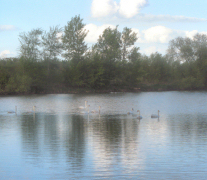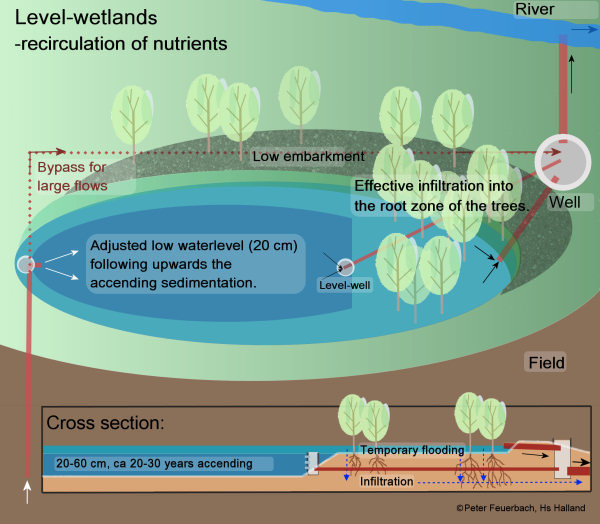

 |
|
 |
|
|
|
|
||
| Level wetlands | |
| Level wetlands are a new type of wetland with
focus on recirculation of nutrient, where the problem of nutrient
leakage is attacked from a different perspective. A level-adjusted
wetland can be optimized for true retention of nutrients within the
wetland as opposed to earlier focus which have been on the resource
wasteful process of denitrifikation. Like other types of wetlands a level wetland is collecting drainage water from several pipes along the site. Many times traditional constructed wetlands are not able to collect much of the phosphorous connected to sediment particles. The smalest of particles with carrying the most of the phosphourus will not have the time sink to the bottom when water deep is to large. A water depth of 15-20 cm in the level wetlands will lead to short sedimentation distances and typically be controlled by a level well. |
The efficiency is expected to be high when
permanently low water levels optimize sedimentation and where flow peaks
can be infiltrated in specially designed infiltration banks containing
trees which improves infiltration of the water. The contained nutrients
can be extracted from the wetland and used as fertilizers on adjacent
fields. Part of nutrients will be accumulated in the trees. Lägg in bild senare |
 |
|
|
|
|
| © Peter Feuerbach |